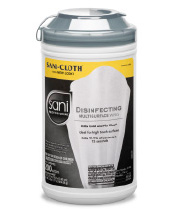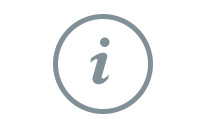



Cleaning, Sanitizing & Disinfecting
What's the Difference?
CLEANING – Cleaning is the removal of visible soil and food debris from surfaces.1 Cleaning is a prerequisite for effective sanitization or disinfection. 2
SANITIZING – Sanitizing reduces the presence of bacteria, viruses and fungi on a previously cleaned surface to safe levels. 1
DISINFECTING – Disinfecting is the elimination of most pathogens and disease-causing microorganisms. 1
If the elimination of most pathogens and disease-causing microorganisms is crucial, a disinfectant must be used after surfaces are cleaned. While sanitizing reduces the number of germs present to levels considered safe, disinfecting effectively eliminates most organisms. Additionally, a sanitizer cannot make claims against spores. Many viruses can be extremely resistant to many antimicrobial treatments and are unlikely to be inactivated by common food-contact surface sanitizers.2 When these viruses may be present, disinfection becomes necessary.
Germs on surfaces spread easily to hands and vice versa. This fact is especially important as it relates to cleaning high-touch surfaces. If a sickened employee touches a surface with their contaminated hands, cross-contamination can occur and may lead to a disease outbreak. This is why all surfaces, especially those considered “high touch,” should be disinfected regularly to reduce outbreaks and decrease absenteeism among workers.3 A surface must be properly cleaned prior to disinfection to ensure the efficacy of the disinfectant.
When choosing a disinfectant, remember that these products must be registered with the federal Environmental Protection Agency and with each state’s agency. Also consider formulations appropriate to the surfaces you want to disinfect. Bleach, Alcohol and Quaternary Ammonium Chloride are common disinfectant ingredients; however, some may cause deleterious effects on surfaces.
Sani Professional® Disinfecting Multi-Surface Wipes are proven effective against a broad spectrum of viruses and bacteria, including both the cold and flu viruses and common bacteria like salmonella, E. coli, and MRSA*. Help prevent the spread of germs by disinfecting tables, hand-rails, doorknobs, restroom surfaces, and more. Sani Professional® Disinfecting Wipes are bleach-free and alcohol-free and kill 99.9% of bacteria in just 15 seconds!*

Make disinfecting protocols hassle-free with Sani Professional® Disinfecting Multi-Surface Wipes!


